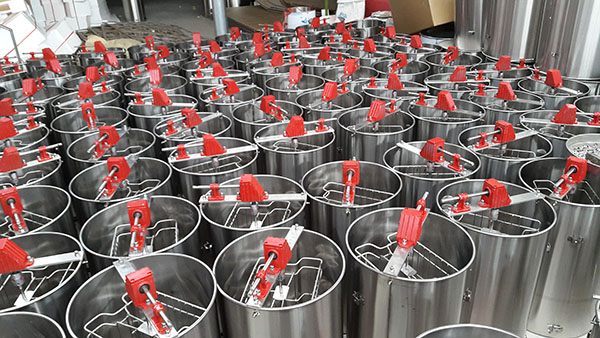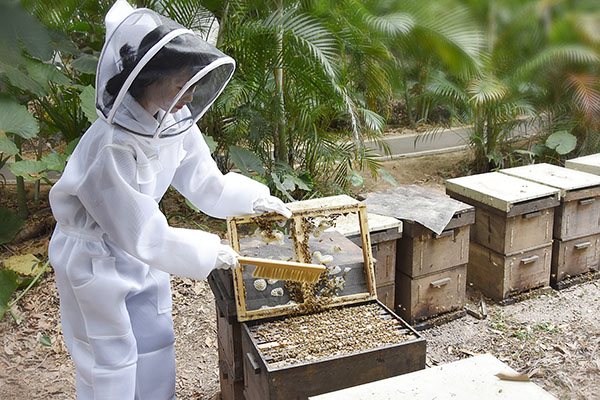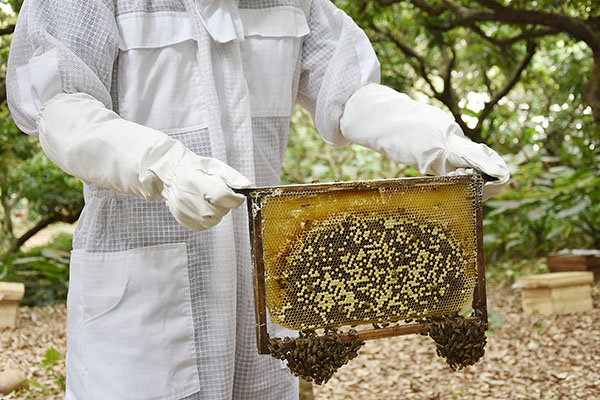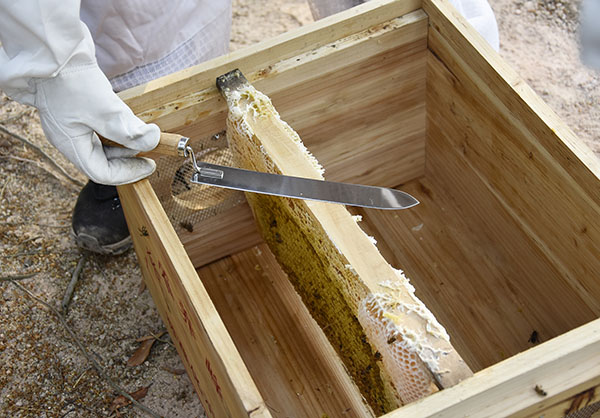What beekeeping tools do you need to beekeeping bees?
 Nov 08,2022
Nov 08,2022

 Lucia Ma
Lucia Ma
The main supplies a beekeeper needs to collect honey include a complete beekeeper kit, hive tools, bee smoke , bee brushes, honey strainer, honey extractor and jars for storing honey, etc.
Beekeeping equipment honey extractor
Honey extraction equipment is used to extract honey from bee boxes while preserving the physical state of the bee boxes for future use. These mechanical devices mainly have large drums as extraction chambers for placing honeycombs. Once the honeycombs are harvested, they are transferred into the drum, which is then set to spin at high speed, squeezing out all the honey. Simply put, the extractor is designed to use centrifugal force to extract honey from the hive while keeping it intact.

Beekeeping bee suit
For a novice beekeeper, safety will be your number one concern. Therefore, one of the most important aspects you will need when harvesting is beekeeping clothing. Since the face and neck are the most vulnerable parts of the human body, the hat and veil are the most important parts of beekeeping clothing. A good beekeeping suit can provide ample protection from bee stingers and protect the beekeeper from bee venom. A complete beekeeping suit includes a lightweight full-length jumpsuit complete with hood and veil, as well as gloves. Although some beekeepers find wearing gloves too cumbersome when performing delicate beekeeping tasks, gloves are an important part of protecting beekeepers' hands when collecting honey. Bees don't like wool or rough fabrics, so keep them smooth. Also, stay away from any oily or animal-smelling materials, which may attract swarms of bees to you. Make sure your suit is fully covered and any gaps are sealed. It's also a good idea to only choose thick materials that won't overheat but at the same time are thick enough to withstand bee stingers.
Beekeeping bee smoke
This is an important honey harvesting device, especially if you want to avoid being stung by angry bees. Beekeepers use "smokers" to calm bees to harvest honey. The smoke dulls their receptors and prevents guard bees from releasing alarm signals - pheromones. It basically disorients the bees, causing them to retreat deeper into the hive. With only a few bees around the frame, the process of collecting honey is made easier. The smoke also made them eat more honey, which reassured them further! Smokers aim to emit smoke by using various fuels. Many different natural fuels can be used, including burlap, twine, burlap, pine needles, corrugated cardboard, or rotting wood.

Honey strainer
After using the honey extractor, you will be ready to package the honey. However, before you can pour honey into a jar and label it your own, you first need to remove all impurities. The easiest way is to use a honey filter. You can use a normal kitchen strainer filter, but I recommend a professional honey filter for the job. An effective honey filter separates impurities from honey such as sawdust, bee parts, wax and any other unwanted particles. After pouring the honey into the filter, you will get pure, clear honey.

Beekeeping bee brushes
A bee brush is a tool often recommended for new beekeepers. Brushes are used to remove bees frame the hive during harvest. It is also used for other purposes such as queen bee rearing, etc. The bee brush is an essential tool because it gently removes bees from the frame without killing them. Brushes are usually made of soft bristles that are uniquely designed to get rid of bees without causing any harm. During honey collection, you need to sweep each frame with the bee brush before placing it in the extractor. This is a job that requires care and can be time consuming if you have a lot of bees. The key is to use a brush to carefully remove the bees from the frame and to position the frame in a way that the bees don't get tangled or break their legs in the process.
Beekeeping uncapping knife
The uncapping knife is used to make clean, quick cuts in wax caps on honeycombs. Wax caps often create an airtight seal around the cells that hold the honey, making it very difficult to extract the honey. With the electric heated cap opener, you can easily remove the cap on the honeycomb and extract the honey easily. Another alternative to an electric uncapping knife is a serrated edge or serrated knife. Make sure the uncapping knife is clean, hot, and dry to simulate the effect of an electric uncapping knife before use. To make it hot, soak it in hot water and dry it with a clean cloth before use. Remember, you don't want any contamination, so you must make sure the uncapping knife are clean and free of rust.
Beekeeping uncapping fork
Another essential and useful honey harvesting equipment is the uncapping fork. The uncapping fork is used to scrape off the caps that are missed by the uncapping knife. This is a great tool to scrape the hard caps on the honeycomb. You can use it in place of uncapping knife, or just to pry open indomitable cells that your knife can't open. Either way, it does a great job every time!

Honey storage bottle or jar
Another important honey harvesting equipment is the Honey storage bottle. You will need to store your harvested honey in an airtight jar with a lid. Use jars made of materials that will last for a long time. Food-grade plastic or glass is the first choice for many beekeepers. Whichever choice you make, it keeps the lid of the container tightly closed.




 Tel:
Tel:

 Home
Home Why don't bees bite beekeepers?
Why don't bees bite beekeepers?  You May Also Like
You May Also Like







 Tel
Tel
 Email
Email
 Address
Address







